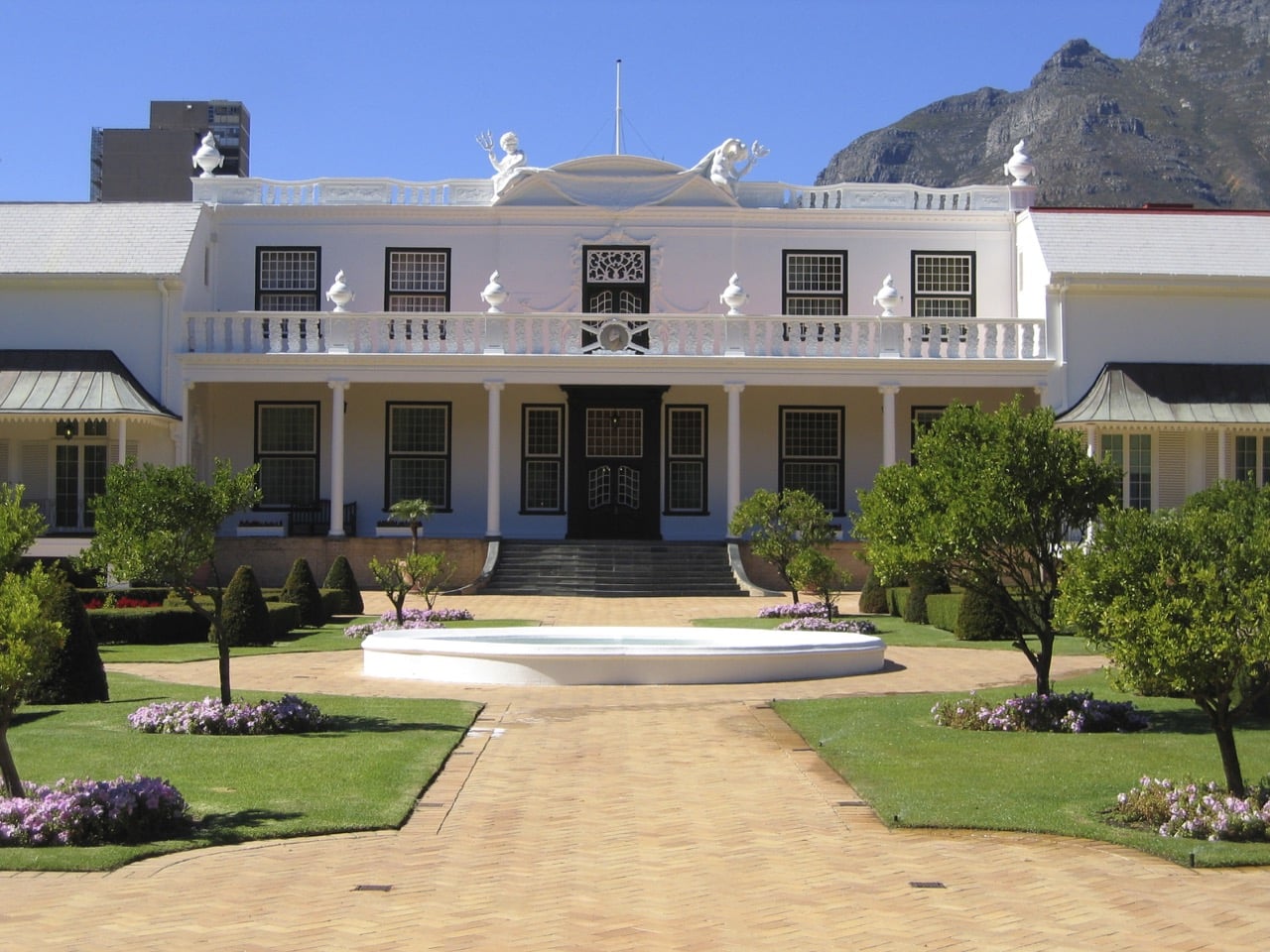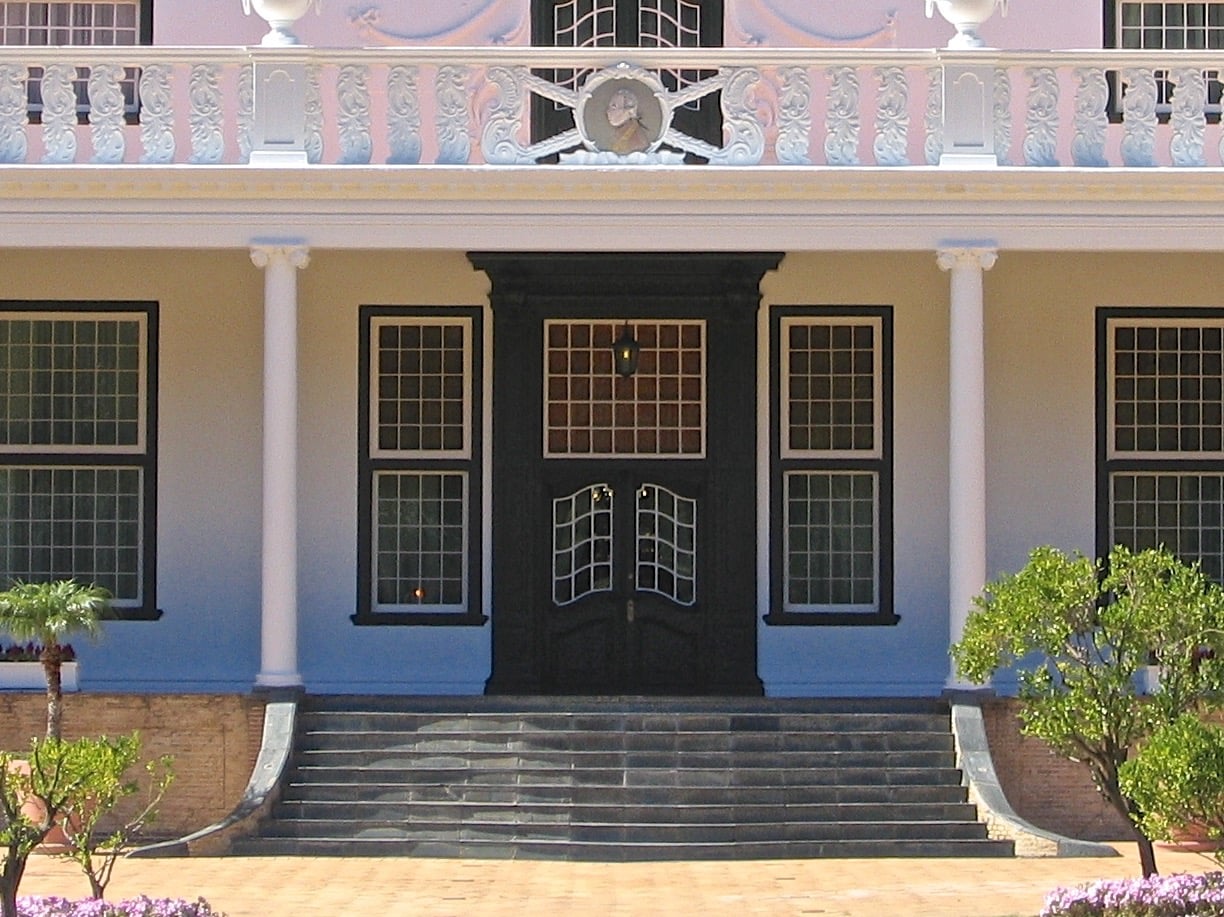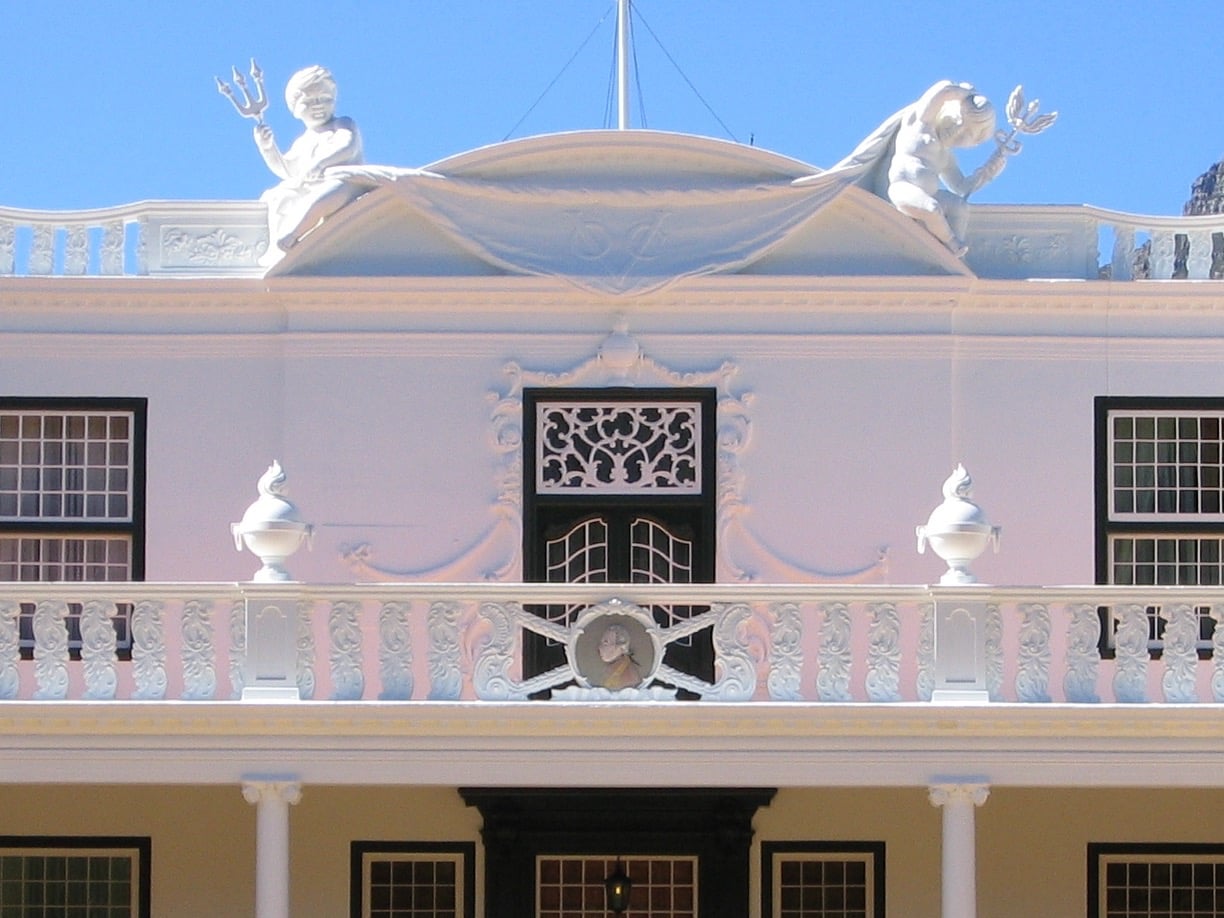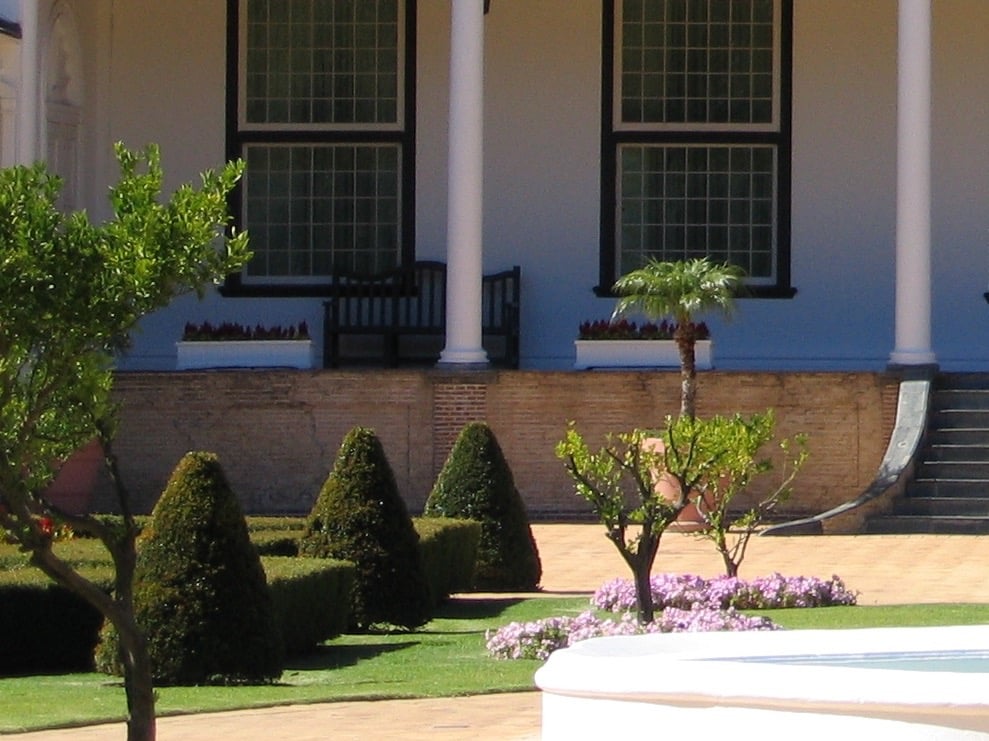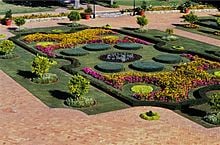During my visit to the Company’s Gardens in Cape Town South Africa, the architecture and landscape of De Tuynhuys, or The Garden House, caught my attention. But it was the 300 years of history of the place that kept my interest.
It is currently the President’s official residence and thus not open to the public (even to a garden blogger like me). The views above are what's visible through a tall metal gate. The house sits to one side of the main walk of Cape Town’s “Central Park,” known as the Company’s Gardens. As I pressed myself up against the railing to get a better view, I expected security guards to come out at any minute.
Notice the entryway of De Tuynhuys in the background. "South African President F.W. de Klerk poses outside his office while displaying a copy of a local newspaper with banner headlines declaring a 'Yes' result in the referendum in Cape Town, South Africa on March 18, 1992. De Klerk won a mandate to end apartheid and share power with the black majority for the first time by scoring a landslide victory in a whites-only referendum on reform," CityLab (AP. Photo)
The house and garden are examples of Dutch formal design. Elements are arranged symmetrically off the main entrance. The façade includes wonderful sculptures of Mercury and Poseidon as infants, holding the Dutch East India Company emblem “VOC”. If I could only take one of these home!
The story of this house begins with the Company’s Gardens. These were started in the 1650’s when the Dutch displaced the Khoekheon people to establish an important trading post halfway between Europe and Southeast Asia.
Slaves brought from other parts of Africa, Southeast Asia, and India built the garden and cultivated vegetables and herbs. They lived in the nearby Slave Lodge in cramped basement barracks.
The harvest was used to sustain the post and to outfit ships on their way to the Spice Islands. At the time, valuable clove, mace and nutmeg could only be found there.
De Tuynhuys was first a shed for garden tools, then converted to a simple cottage. The structure we see now was built in 1700 by the Dutch East India Company as a guesthouse. The elaborate parterre gardens were added in the 1790’s.
Like the rest of the infrastructure of the town, the house was built by slaves. They were the only ones in Cape Town with the skills to do so. The majestic door of the house is attributed to the skilled carpenter, Rangton van Bali. He was forced into slavery in his native Bali, and brought to Cape Town to work as a tradesman. He developed an expertise in carpentry and bought his freedom in 1712.
When South Africa gained independence in 1961, De Tuynhuys became the official Presidential residence.
In 1992, F.W. de Klerk announced the end of apartheid on the steps of Tuynhuys.
De Tuynhuys is not only a beautiful example of formal Dutch garden making, it is also a house and garden that captures the complex history of this amazing place.
Learn more about the Company's Gardens here.
Aerial photos show the formal layout of the garden. Source: Janek Szymanowski, 1988, and Discott, 2013.
An early lay out for the garden.

